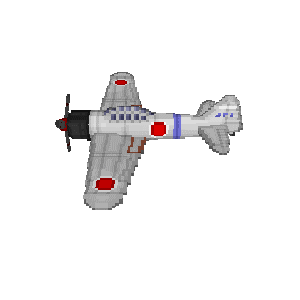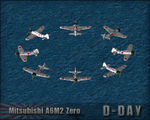Difference between revisions of "Mitsubishi A6M2 Zero"
From D-day: wiki
| (2 intermediate revisions by the same user not shown) | |||
| Line 28: | Line 28: | ||
==References== | ==References== | ||
*[http://en.wikipedia.org/wiki/Mitsubishi_A6M_Zero Wikipedia] | *[http://en.wikipedia.org/wiki/Mitsubishi_A6M_Zero Wikipedia] | ||
| + | }} | ||
| + | |||
| + | |||
| + | {{Timeframe | ||
| + | |||
| + | |totalwar=yes | ||
| + | |||
| + | |earlybc=yes | ||
| + | |midbc=yes | ||
| + | |latebc=yes | ||
| + | |postbc=yes | ||
| + | |totalbc=yes | ||
| + | |||
}} | }} | ||
| Line 36: | Line 49: | ||
image:a6m2.jpg{{!}} | image:a6m2.jpg{{!}} | ||
}} | }} | ||
| + | |||
| + | |||
| + | {{Box | ||
| + | |title=Comments | ||
| + | |content= | ||
| + | |||
| + | <comments voting="Plus" /> | ||
| + | |||
| + | }} | ||
| + | |||
{{JapanNav}} | {{JapanNav}} | ||
Latest revision as of 13:27, 29 July 2015
| ||||||||||||||||
History
The most famous Japanese fighter of world war 2 the A6M Zero was Japan's primary carrier based fighter plane during the early stages of the war. When introduced in 1940 it was considered the best carrier plane in the world, the A6M2 variant was the first major production model with over 1,500 being built. Their first use in combat was in China where 13 A6M2 Zeros shot down 27 Polikarpov I-15 and I-16 without any losses. They continued to dominate the air during the early stages of the Pacific war. It wasn't until July 1942 when a crash landed but intact A6M2 Zero was found on Akutan Island in Alaska that the Americans were able to study the Zero. From this captured plane the Americans were able to devise tactics to deal with the Zero and along with the introduction of new American fighters were able to end the Zero's dominance in the Pacific.
Notes
The A6M was known by multiple names during the war, Mitsubishi Navy Type 0, Mitsubishi Navy 12-shi & Mitsubishi A6M Rei-sen, Rei-sen meaning "zero fighter". Originally the official Allied reporting name was "Zeke" however later in the war "Zero" became more common.
References
. . . .
Time Frames
| 1930 - 1940: Pre-War |
1940 - 1942: Early-War |
1942 - 1944: Mid-War |
1944 - 1945: Late-War |
1945 - 1960: Post-War |
1930 - 1960: Total-War |
|
| Buildable | Yes | |||||
| Bonus Crate | Yes | Yes | Yes | Yes | Yes |
. . . .
Comments
. . . .


Enable comment auto-refresher